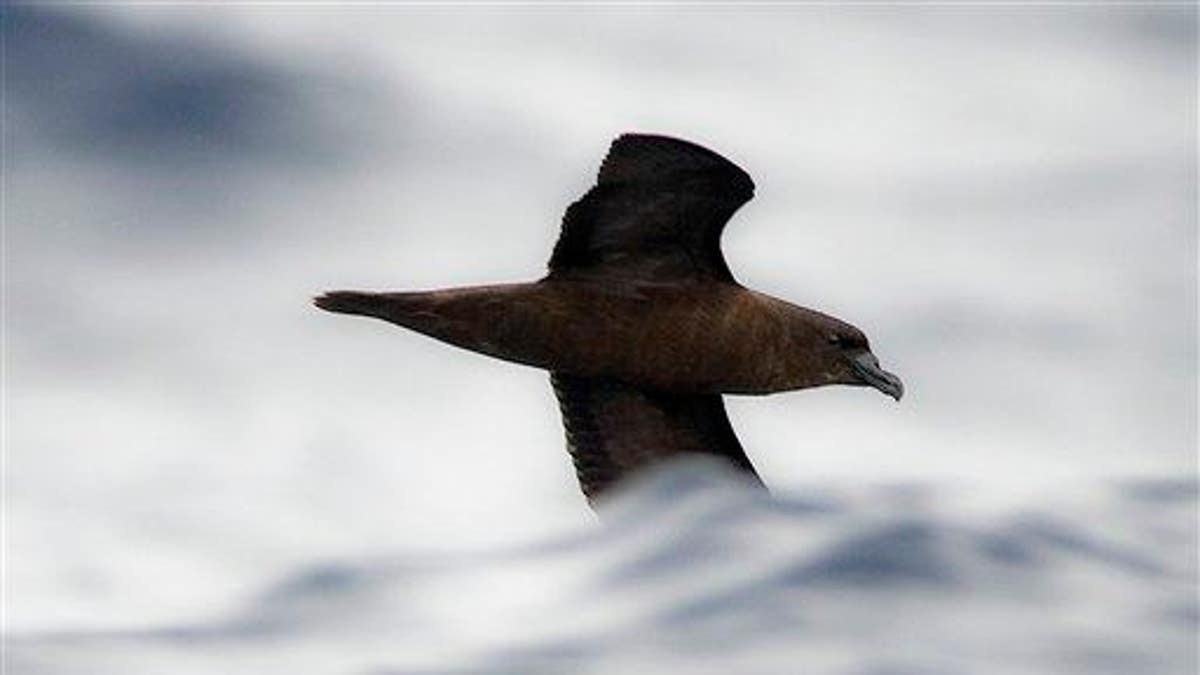
A petrel flies over the waves about 25 miles south of Fiji's remote island of Gau. (AP Photo/BirdLife International)
Balloons ingested by seabirds are more deadly to them than hard plastics, a study released last week concluded.
Studying the cause of death of more than 1,700 seabirds, researchers from the Institute for Marine and Antarctic Studies (IMAS) at the University of Tasmania and other organizations concluded balloons are the “highest-risk plastic debris item for seabirds,” a statement regarding the study’s findings, which were published in the journal Scientific Reports on March 1, states.
DUCKS, GEESE IN COLORADO DYING FROM ‘NEW DUCK DISEASE,' PROMPTING WARNING FROM WILDLIFE OFFICIALS
Of the 1,733 seabirds studied, scientists found that one in three of the birds had ingested marine debris prior to its death.
Though hard plastic typically accounts for the majority of marine debris ingested by seabirds, it is “far less likely to kill than soft plastics such as balloons,” the researchers concluded, according to the statement. In fact, balloons are “32 times more likely to kill than ingesting hard plastics,” they found.
“Among the birds we studied the leading cause of death was blockage of the gastrointestinal tract, followed by infections or other complications caused by gastrointestinal obstructions. Although soft plastics accounted for just 5 percent of the items ingested they were responsible for more than 40 percent of the mortalities,” the study’s lead author and a doctoral candidate with IMAS, Lauren Roman, said in the statement.
LIFE-SIZE TIGER STATUE IN VIRGINIA ALLEYWAY 'SHOCKS' PATROLLING POLICE OFFICER
“Balloons or balloon fragments were the marine debris most likely to cause mortality, and they killed almost one in five of the seabirds that ingested them," she continued, noting researchers hypothesized hard plastic fragments pass quickly through the bird's gut while soft plastics "are likely to become compacted and cause fatal obstructions."
The researchers said their findings “have significant implications for quantifying seabird mortality due to debris ingestion, and provide identifiable policy targets aimed to reduce mortality for threatened species worldwide.”
